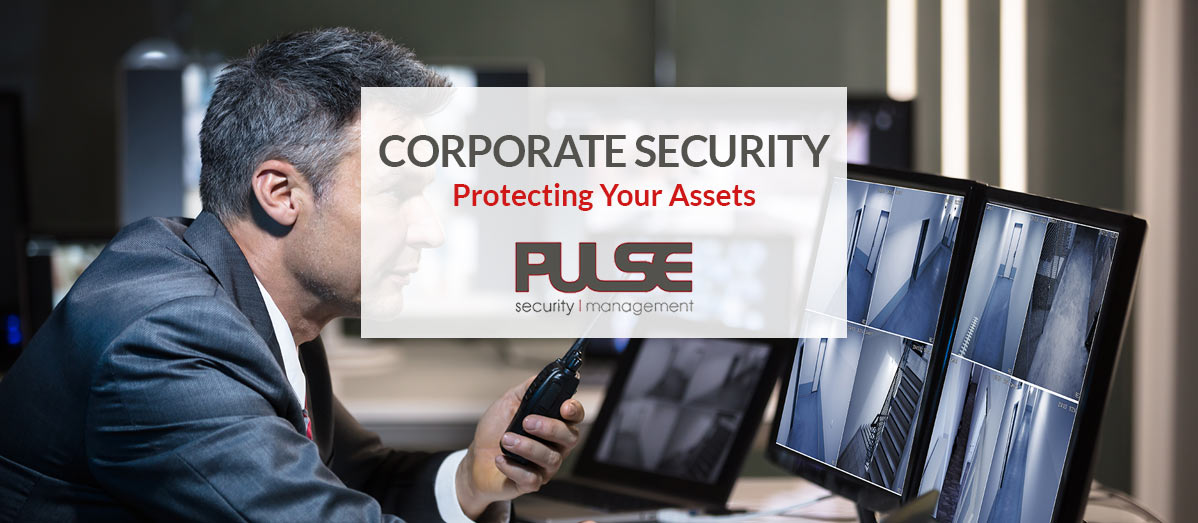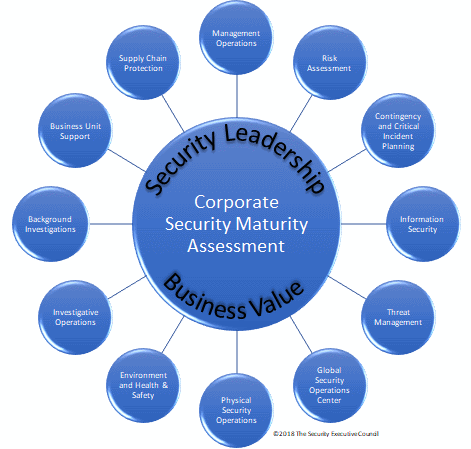Securing Success: A Deep Dive into Corporate Security Techniques
Wiki Article
From Cybersecurity to Physical Procedures: Enhancing Corporate Protection in a Transforming World
By incorporating the toughness of both cybersecurity and physical protection, business can produce a detailed protection approach that addresses the diverse range of threats they encounter. In this conversation, we will certainly discover the altering threat landscape, the requirement to integrate cybersecurity and physical safety and security, the application of multi-factor verification measures, the importance of employee recognition and training, and the adjustment of security actions for remote labor forces. By taking a look at these key locations, we will gain important understandings into how companies can strengthen their business safety and security in an ever-changing world.Recognizing the Altering Risk Landscape
The advancing nature of the contemporary globe demands a thorough understanding of the altering risk landscape for reliable company safety. In today's digital and interconnected age, risks to corporate protection have actually become much more complex and innovative. As innovation advancements and businesses become increasingly dependent on digital framework, the possibility for cyberattacks, data violations, and other protection violations has significantly boosted. It is essential for companies to stay notified and adjust their safety gauges to deal with these advancing risks.One key facet of comprehending the transforming threat landscape is recognizing the different kinds of dangers that companies face. Cybercriminals are constantly establishing brand-new methods to exploit vulnerabilities in computer system systems and networks. These threats can vary from malware and ransomware attacks to phishing scams and social engineering techniques. In addition, physical dangers such as burglary, criminal damage, and company reconnaissance continue to be prevalent concerns for companies.
Monitoring and evaluating the risk landscape is necessary in order to determine prospective threats and susceptabilities. This includes staying upgraded on the most recent cybersecurity fads, examining danger intelligence records, and carrying out routine risk analyses. By understanding the changing hazard landscape, companies can proactively execute proper protection procedures to reduce threats and shield their assets, reputation, and stakeholders.
Integrating Cybersecurity and Physical Safety
Integrating cybersecurity and physical security is crucial for thorough business defense in today's interconnected and electronic landscape. As companies significantly count on innovation and interconnected systems, the boundaries in between physical and cyber threats are coming to be obscured. To efficiently guard against these threats, an all natural strategy that combines both cybersecurity and physical protection steps is vital.Cybersecurity concentrates on protecting electronic assets, such as networks, data, and systems, from unapproved gain access to, disturbance, and theft. Physical protection, on the other hand, includes actions to secure physical possessions, individuals, and facilities from vulnerabilities and dangers. By incorporating these two domains, companies can resolve vulnerabilities and risks from both physical and digital angles, thus improving their total security stance.
The integration of these two self-controls permits a much more comprehensive understanding of safety and security dangers and allows a unified action to incidents. Physical access controls can be improved by integrating them with cybersecurity procedures, such as two-factor authentication or biometric identification. Likewise, cybersecurity procedures can be enhanced by physical protection procedures, such as surveillance cameras, alarms, and secure gain access to factors.

Applying Multi-Factor Verification Steps
As companies increasingly focus on thorough protection steps, one reliable approach is the application of multi-factor verification steps. Multi-factor verification (MFA) is a protection method that requires customers to provide several kinds of recognition to access a system or application. This method includes an added layer of protection by combining something the customer recognizes, such as a password, with something they have, like a safety and security or a finger print token.By executing MFA, companies can dramatically enhance their safety stance - corporate security. Traditional password-based authentication has its restrictions, as passwords can be easily endangered or neglected. MFA mitigates these risks by adding an additional authentication element, making it harder for unapproved people to get to delicate info
There are numerous sorts of multi-factor verification approaches readily available, including biometric authentication, SMS-based verification codes, and equipment symbols. Organizations require to analyze their specific needs and pick one of the most ideal MFA remedy for their demands.
Nonetheless, the application of MFA should be very carefully prepared and performed. It is important to strike a balance between safety and functionality to avoid user aggravation and resistance. Organizations must likewise consider possible compatibility problems and offer appropriate training and assistance to make sure a smooth change.
Enhancing Employee Understanding and Training
To reinforce business security, organizations need to focus on improving staff member awareness and training. Numerous protection breaches happen due to human mistake or absence of awareness.Effective worker understanding and training programs ought to cover a that site vast array of topics, consisting of information defense, phishing strikes, social engineering, password hygiene, and physical protection actions. These programs should be tailored to the particular demands and duties of various staff member duties within the organization. Regular training simulations, workshops, and sessions can help employees develop the essential skills and expertise to determine and react to protection hazards effectively.
Additionally, companies ought to urge a society of safety awareness and provide continuous updates and tips to keep employees educated regarding the newest risks and reduction methods. This can be done through inner communication channels, such as e-newsletters, intranet websites, and e-mail campaigns. By fostering a security-conscious labor force, organizations can significantly lower the possibility of security cases and secure their valuable possessions from unapproved accessibility or compromise.

Adapting Safety Measures for Remote Workforce
Adjusting business safety and security actions to accommodate a remote labor force is essential in making sure the defense of delicate information and possessions (corporate security). With the increasing trend of remote work, organizations need to apply suitable safety procedures to minimize the threats related to this new way of workingOne essential element of adapting safety procedures for remote job is developing safe interaction channels. Encrypted messaging platforms and virtual private networks (VPNs) can aid protect delicate info and avoid unauthorized access. In addition, companies need to apply using solid passwords and multi-factor authentication to improve the security of remote access.
One more essential consideration is the implementation of secure remote accessibility remedies. This entails giving staff members with safe access to corporate sources and information with virtual desktop framework (VDI), remote desktop computer procedures (RDP), or cloud-based services. These technologies make certain that delicate details continues to be safeguarded while enabling staff members to do their functions effectively.

Finally, thorough safety awareness training is important for remote workers. Educating sessions need to cover ideal practices for safely accessing and managing delicate details, recognizing and reporting phishing efforts, and keeping the total cybersecurity advice health.
Verdict
In conclusion, as the threat landscape remains to evolve, it is essential for organizations to enhance their safety gauges both in the cyber and physical domain names. Incorporating cybersecurity and physical security, implementing multi-factor verification steps, and improving worker understanding and training are vital steps in the direction of achieving durable company protection. Furthermore, adapting security measures to suit remote labor forces is imperative in today's transforming world. By executing these steps, organizations can mitigate threats and protect their beneficial possessions from possible risks.In this conversation, we will certainly explore the altering threat landscape, the demand to integrate cybersecurity and physical protection, the application of multi-factor authentication procedures, the importance of staff member understanding and training, and the adaptation of safety measures for remote labor forces. Cybersecurity measures can be matched by physical safety and security actions, such as surveillance electronic cameras, alarms, and safe access factors.
As companies progressively focus on comprehensive safety measures, one effective technique is the execution of multi-factor authentication steps.In verdict, as the risk landscape proceeds to evolve, it is important for companies to strengthen their protection measures both in the cyber and physical domains. Integrating cybersecurity and physical safety, applying multi-factor authentication procedures, and boosting Check This Out employee awareness and training are vital actions in the direction of achieving robust business safety.
Report this wiki page